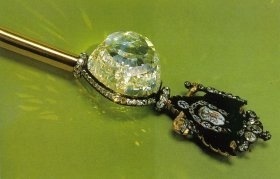Six hours from Irkutsk by local bus and a small ferry ride is Olkhon, the largest island on Lake Baikal. Tell anyone your plans include visiting Olkhon and they’ll ask if you’re staying at Nikita’s Homestead – it seems the two are synonymous – and with good reason as Nikita is widely credited for almost singlehandedly establishing Olkhon as a destination for visitors.
Nikita’s Homestead is on the outskirts of the main Olkhon town of Khuzhir, near the Shaman Rock, which sounds idyllic, and in many ways it is – for us, it was so nice not to have to think about shopping, cooking and washing up as all the meals are included, plentiful and tasty. Our spacious room was cosy and quiet, and there was always someone eager to strike up a conversation and share their wonderful (and sometimes scary!) travelling tales.
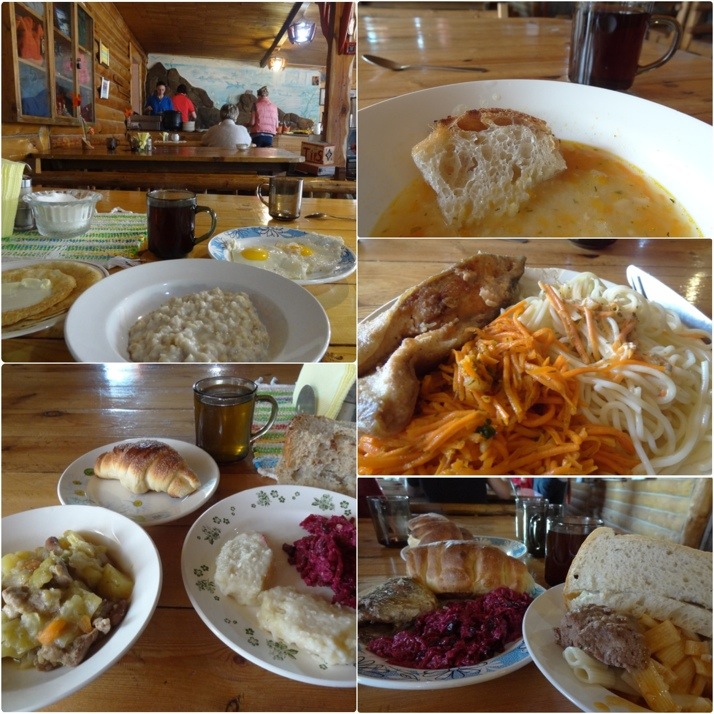 The food at Nikita’s. Clockwise: Breakfast of pancakes, porridge, fried eggs and tea; Lunch of two courses, soup or salad with grilled or fried fish (and this time with spaghetti), and tea; Dinner of beetroot and carrot salad with fish, pasta with giant meatball and lots more tea
The food at Nikita’s. Clockwise: Breakfast of pancakes, porridge, fried eggs and tea; Lunch of two courses, soup or salad with grilled or fried fish (and this time with spaghetti), and tea; Dinner of beetroot and carrot salad with fish, pasta with giant meatball and lots more tea
Unfortunately, and it may just be that we were there early in the season and the cogs of tourism had yet to start turning, we felt Nikita’s suffered from a lack of organisation and openness. Literally in some instances – timetables said things should be open and they weren’t. Sadly, there was little orientation, description or explanation upon arrival, and while the excellent staff on reception answered our questions, sometimes you just don’t know to ask. For example, we didn’t know there were laundry services until 3 days in, and even after asking 2 different people we still couldn’t find the library! Minor criticisms aside, we had a great time there.
Excursion to the northern tip of Olkhon
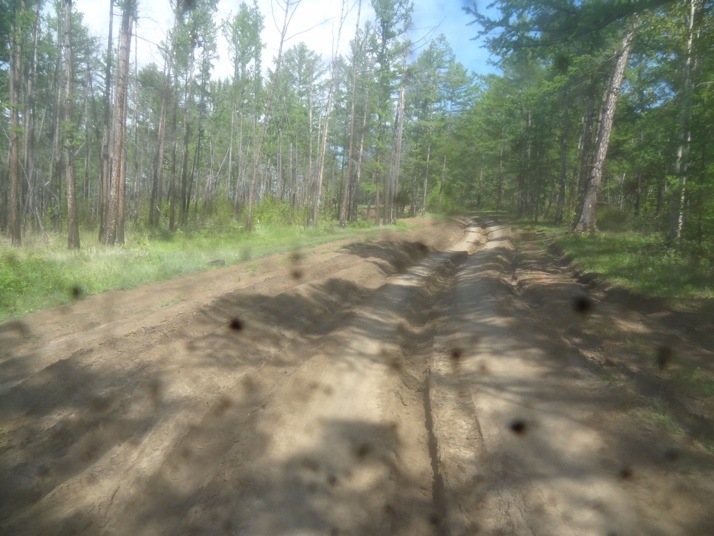 Roads? Where we’re going, we don’t need roads
Roads? Where we’re going, we don’t need roads
We thought the bus to get to Olkhon was bumpy, but that was just the prelude to what we later nicknamed the “Russian Rollercoaster” – the trip from Khuzir to the northern tip of Olkhon island in a UAZ-452 Russian van.
The day trip takes in a number of stops up the western coast of the island, including Crocodile Rock, a human-like face in the cliffs of the mainland, and the site of an old fish processing gulag that continued to operate after prisoners stopped serving time there.
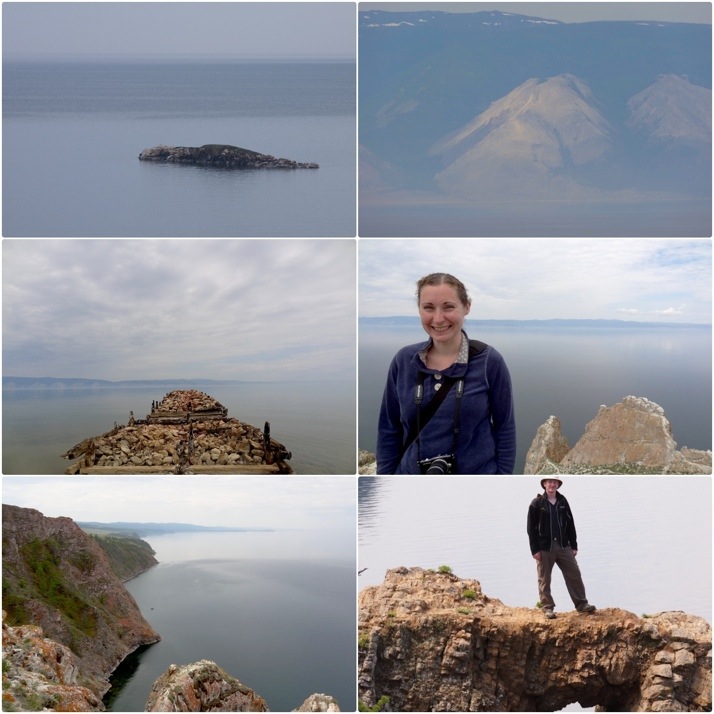 Western coastline of Olkhon. Clockwise: “Crocodile Rock”, The “Face of the Island” on the opposite shore, Old jetty outside a now dismantled gulag fish processing factory, Julie and “The 3 Brothers”, the view south from “The Three Brothers”, and Andrew testing his nerves on a natural window in the rock
Western coastline of Olkhon. Clockwise: “Crocodile Rock”, The “Face of the Island” on the opposite shore, Old jetty outside a now dismantled gulag fish processing factory, Julie and “The 3 Brothers”, the view south from “The Three Brothers”, and Andrew testing his nerves on a natural window in the rock
At Khoboy Peninsular, the most northerly point, you’re afforded wonderful views from the cliff-tops of the lake and the coves below.
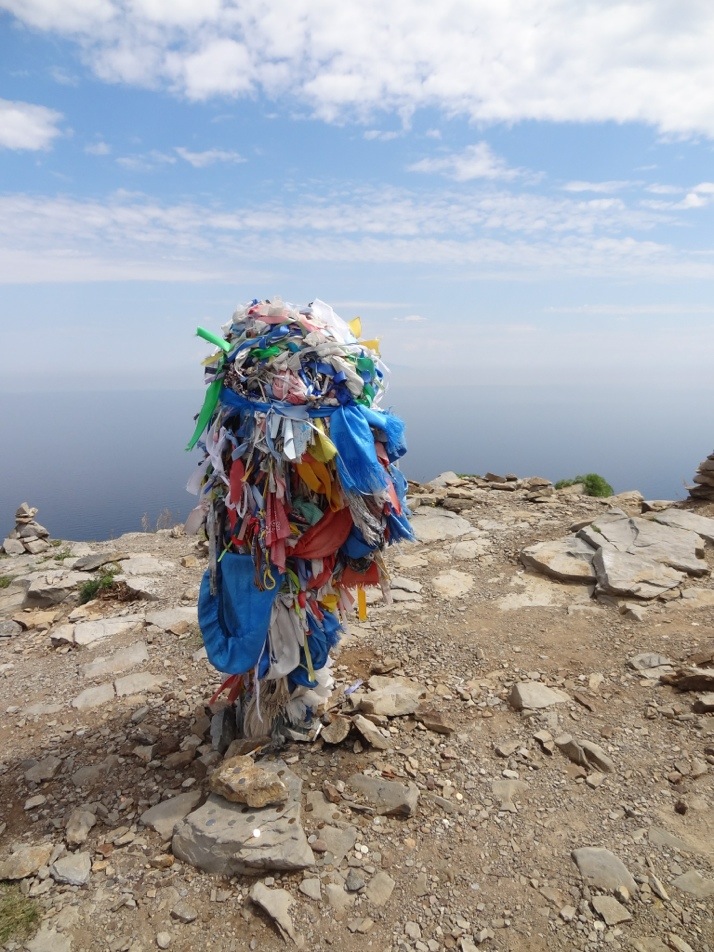 Shamanism prayer ribbons at Khoboy Peninsular – the northern-most tip of Olkhon Island, Lake Baikal, Siberia.
Shamanism prayer ribbons at Khoboy Peninsular – the northern-most tip of Olkhon Island, Lake Baikal, Siberia.
While we were taking in the views, our driver had been setting fire to a bucket of fish-soup. Mmm, lunch too!
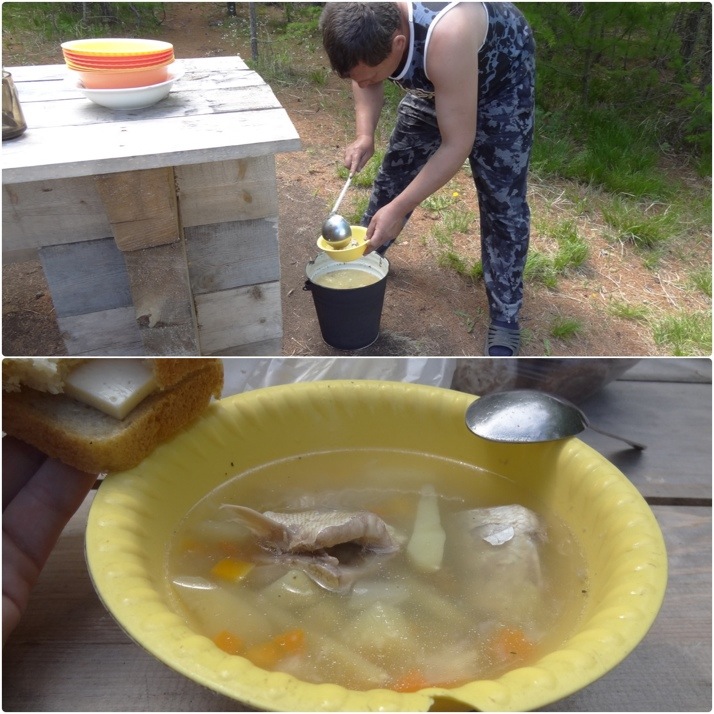 Olkhon delicacy, “Ukha” (fish soup), server up with cheese sarnies, tea, and lots of sweet biscuits
Olkhon delicacy, “Ukha” (fish soup), server up with cheese sarnies, tea, and lots of sweet biscuits
The return journey takes in the little village of Uzury which is the only village on the east coast, has only solar power, and is home to weather and seismic stations, and Mount Zhima, the highest point on the island at 1274m.
A trek and a dip
It is said that swimming in Lake Baikal adds 5 years to your life. Given that at the height of summer, the lake reaches a temperature of just 9C, and it wasn’t the height of summer, it took determination and willpower / complete disregard for personal safety* (delete as appropriate) for us to venture into waters that felt like 3 or 4 degrees..
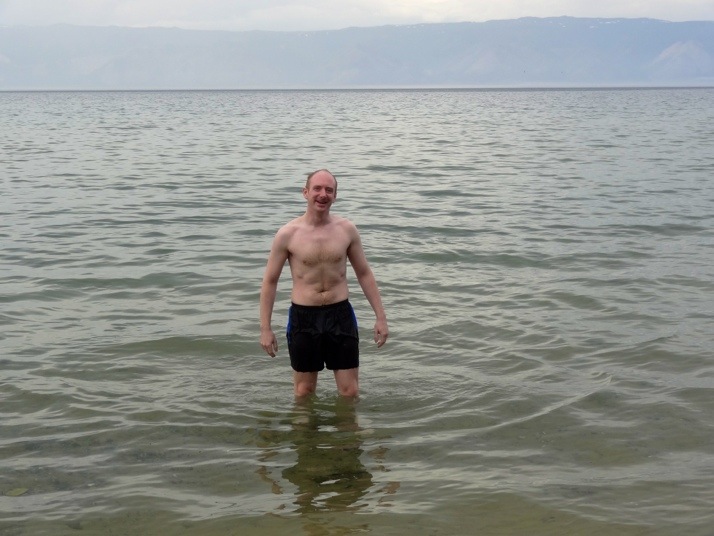 Braving the cold water of Lake Baikal in June – I don’t know why I’m smiling, I can’t feel my feet anymore..
Braving the cold water of Lake Baikal in June – I don’t know why I’m smiling, I can’t feel my feet anymore..
We both waded in, Julie got up to her thighs, and I made the quickest dunk I could to get my head wet. It. Was. Cold.
Good thing it was a lovely day, we had plenty of time to warm through as we trekked back to Khuzir.
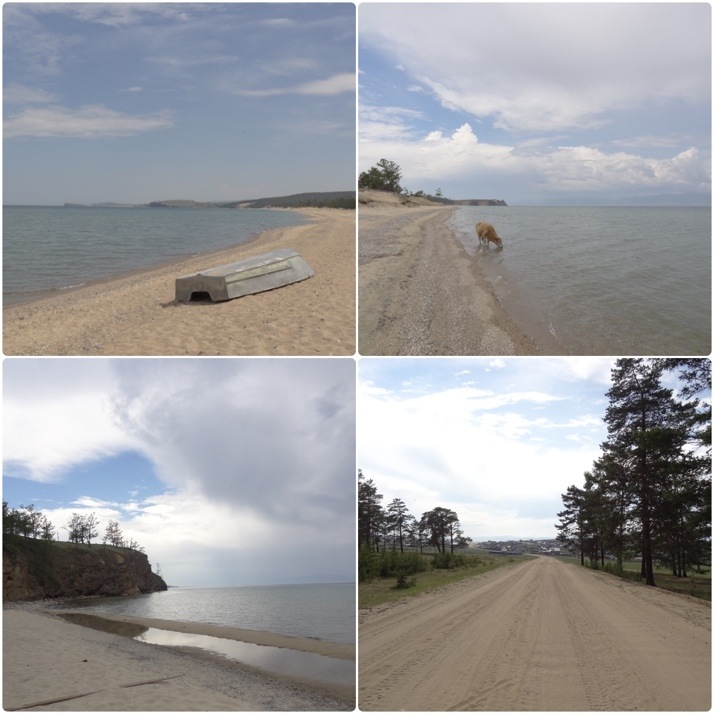 Clockwise: One of the many sandy/pebbly beaches on the western shoreline, cows stopping for a drink in the lake, the beach we took a dip from, view through the forest on the way home
Clockwise: One of the many sandy/pebbly beaches on the western shoreline, cows stopping for a drink in the lake, the beach we took a dip from, view through the forest on the way home
Cycling (with a bit of pushing)
One of the guides had recommended taking bikes through the forest to the eastern coast of the island, and we thought that would be a good idea – we’ve already cycled around lake Shartash when we were in Yekaterinburg.
We hired our bikes in Khuzir instead of from Nikitas (as they were almost half the price), but they were insistent we took a southerly looping route via small lakeside lake (!) on the western coast. Armed with a small laminated satellite map with our route clearly marked in fluorescent yellow, we headed off in the prescribed south-easterly direction to the inconspicuously named ‘view point’. Now, had we stopped to think what that meant, we would have realised that view points typically look out over a vista, which implies height. Starting from the village, that meant uphill. A lot of uphill..
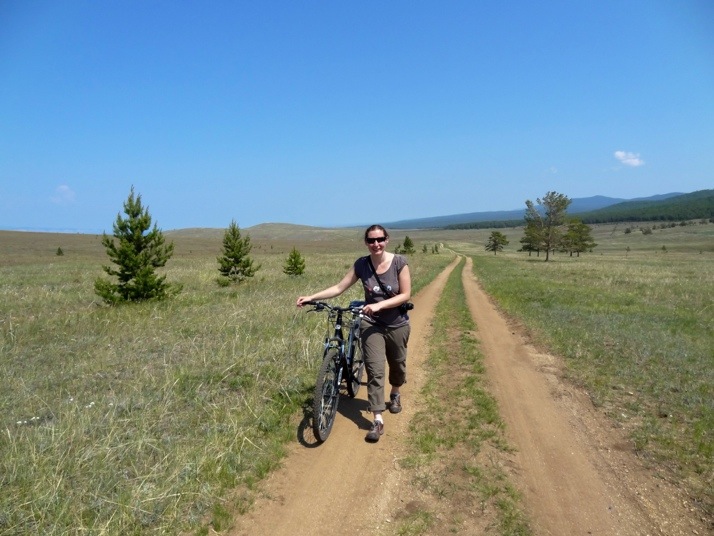 Even in the lowest gear, some parts were tough going. In the end we both resorted to getting off and pushing.
Even in the lowest gear, some parts were tough going. In the end we both resorted to getting off and pushing.
We made it to the viewpoint, and stopped for a much needed rest. The view wasn’t too bad either..
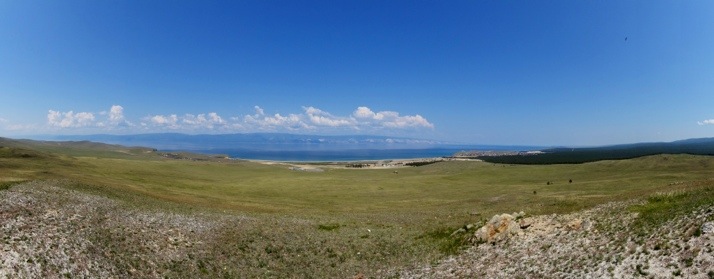 Panorama of Khuzir, Olkhon island, Lake Baikal, Siberia
Panorama of Khuzir, Olkhon island, Lake Baikal, Siberia
The next section was uphill too and we started to think we wouldn’t make it round in the described 6 hours, but shortly thereafter we hit a lengthy downhill section and the fun began – yeehaw!
[youtube=http://www.youtube.com/watch?v=Imr7VFLxHBg]Not quite brave enough to freewheel it all..
The lake was just past the halfway point, and the last part consisted of the undulating main ferry road back to Khuzir. Despite it being the main road, the traffic was sparse which meant we could use the smoothest part, but at times the smoothest part was bumpier than a cattle grid designed for elephants.
Spotting a marmot-like creature in the verge, I tried to stop my bike to take a closer look, and forgetting that the front brake was a lot better than the back, I locked up the front wheel on the sandy-gravel road, which immediately skidded out from under me, sending me knee-first into the ground. With a small tear in my trousers and and a smaller scrape on my knee, I dusted myself off more embarrassed than injured, how long have I been riding bikes?!
Despite my little stumble, the bikes passed an impressive multi-point inspection by a young version of the censoring twins from the movie Good Morning Vietnam. We checked our watch – we’d made good time, 5 hours and 30 minutes. Probably not the fastest, but not the slowest either :o)

 two year trip
two year trip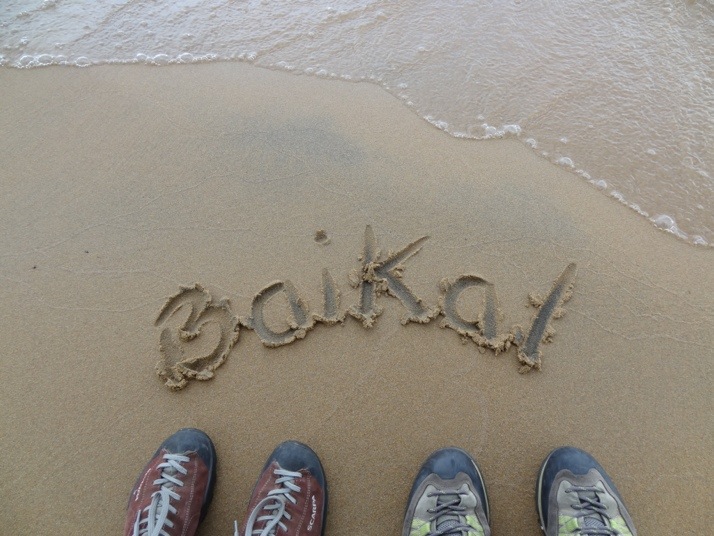 Our feet in Lake Baikal. The water is safe to drink, but maybe not the bit we’ve just stepped in..
Our feet in Lake Baikal. The water is safe to drink, but maybe not the bit we’ve just stepped in..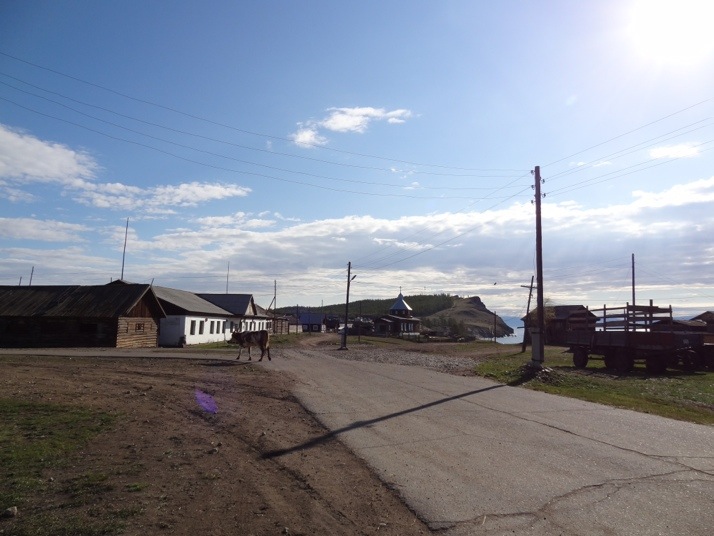 A cow crosses the main road in Baikalskoe village. The trail heads up the hill beyond the church
A cow crosses the main road in Baikalskoe village. The trail heads up the hill beyond the church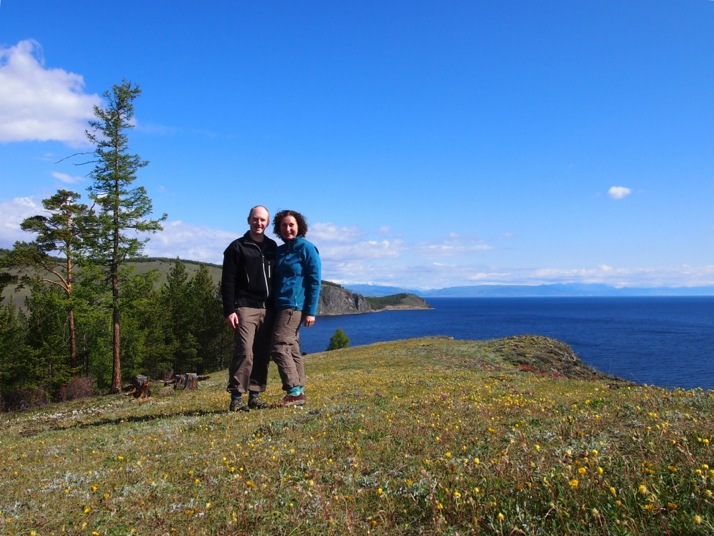 Us on Cape Ludar, just north of Baikalskoe village
Us on Cape Ludar, just north of Baikalskoe village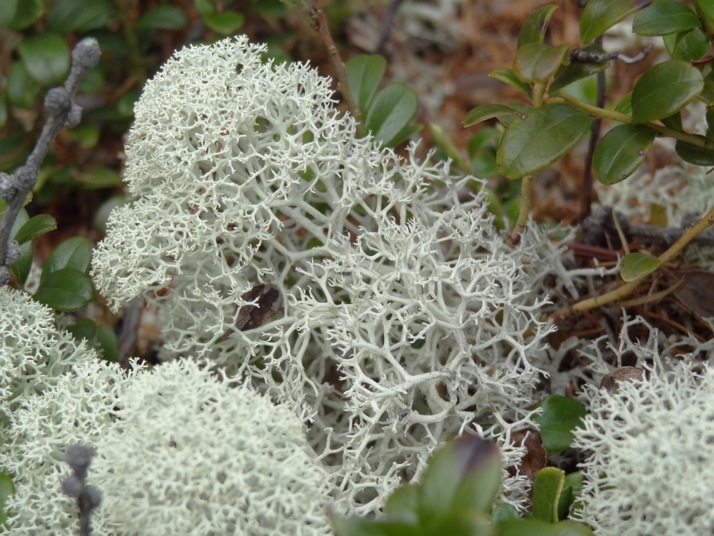 One of the many lichens
One of the many lichens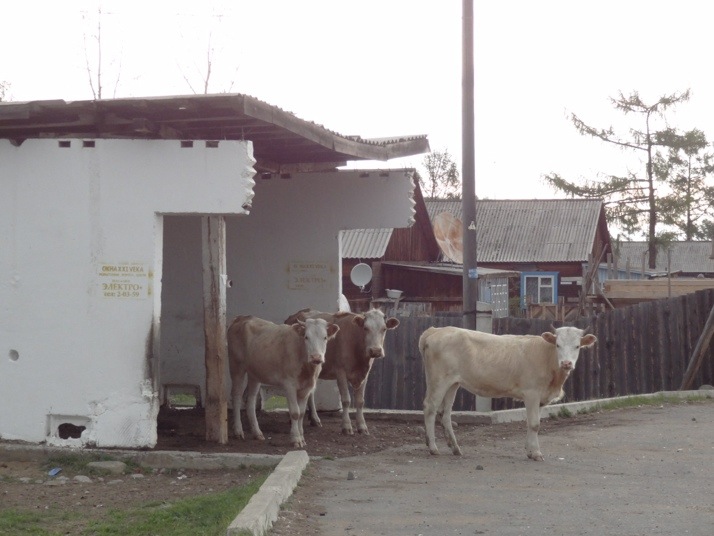 Cows waiting patiently for the bus back to Severobaikalsk
Cows waiting patiently for the bus back to Severobaikalsk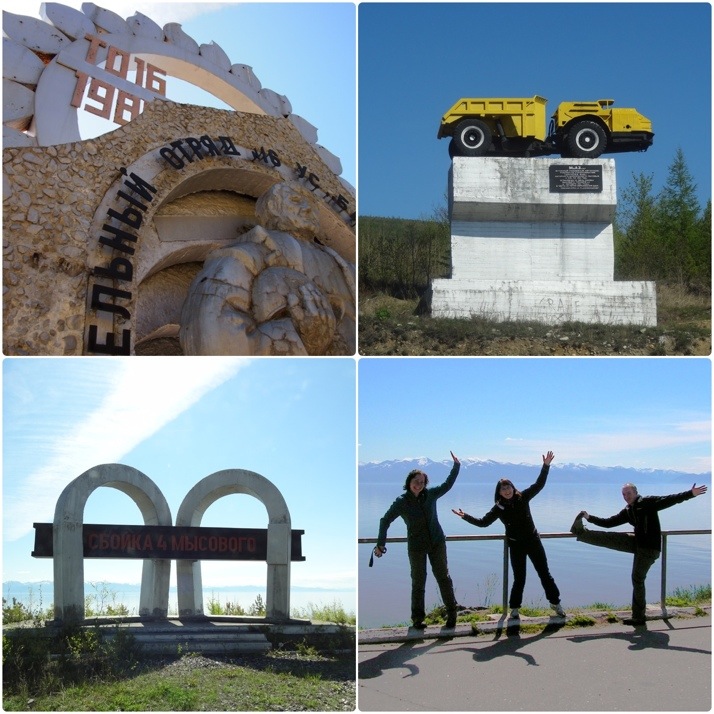 BAM Tunnel monuments, and Julie, Anya and I making silly shapes..
BAM Tunnel monuments, and Julie, Anya and I making silly shapes..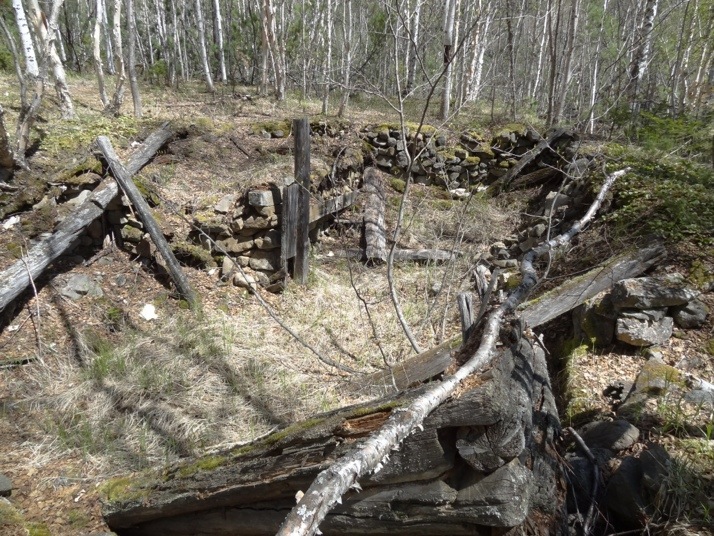 Only foundations remain of this former mica mining gulag camp
Only foundations remain of this former mica mining gulag camp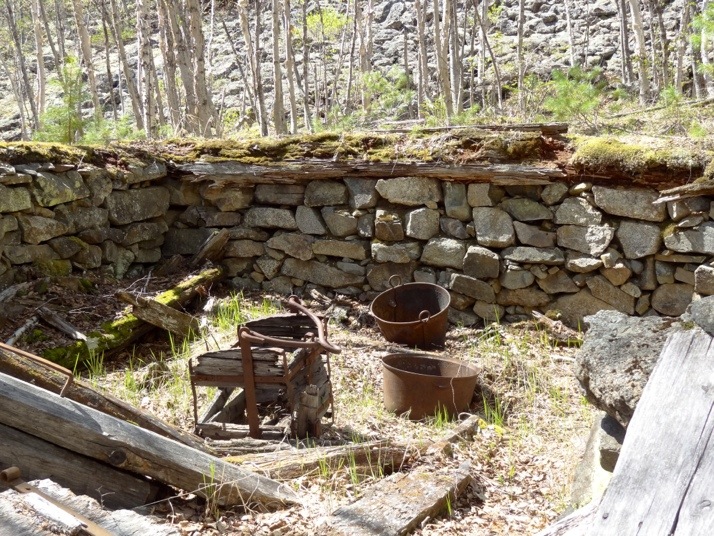 Remains of the kitchen building, containing giant pots
Remains of the kitchen building, containing giant pots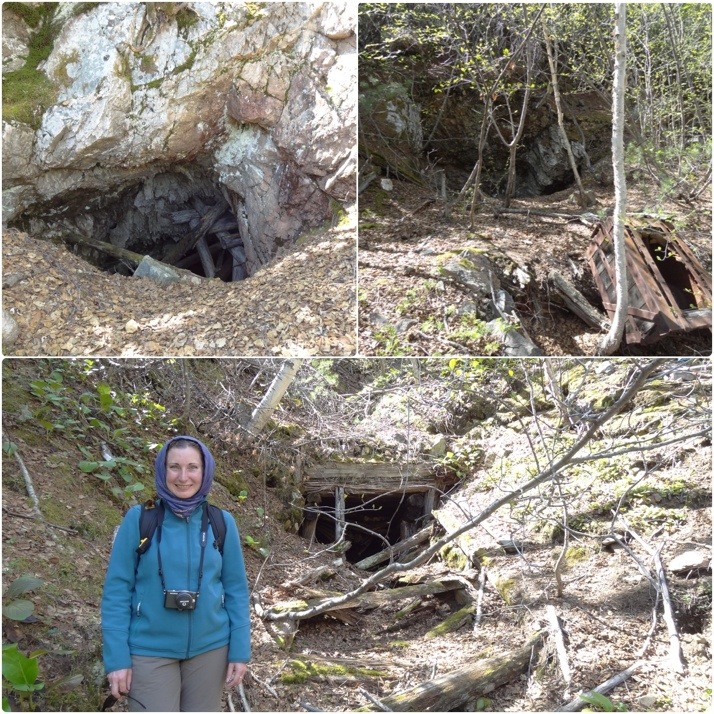 Mica mine entrances, at one of the gulag camps near Severobaikalsk
Mica mine entrances, at one of the gulag camps near Severobaikalsk Enjoying the (very) hot springs in Goudzhekit
Enjoying the (very) hot springs in Goudzhekit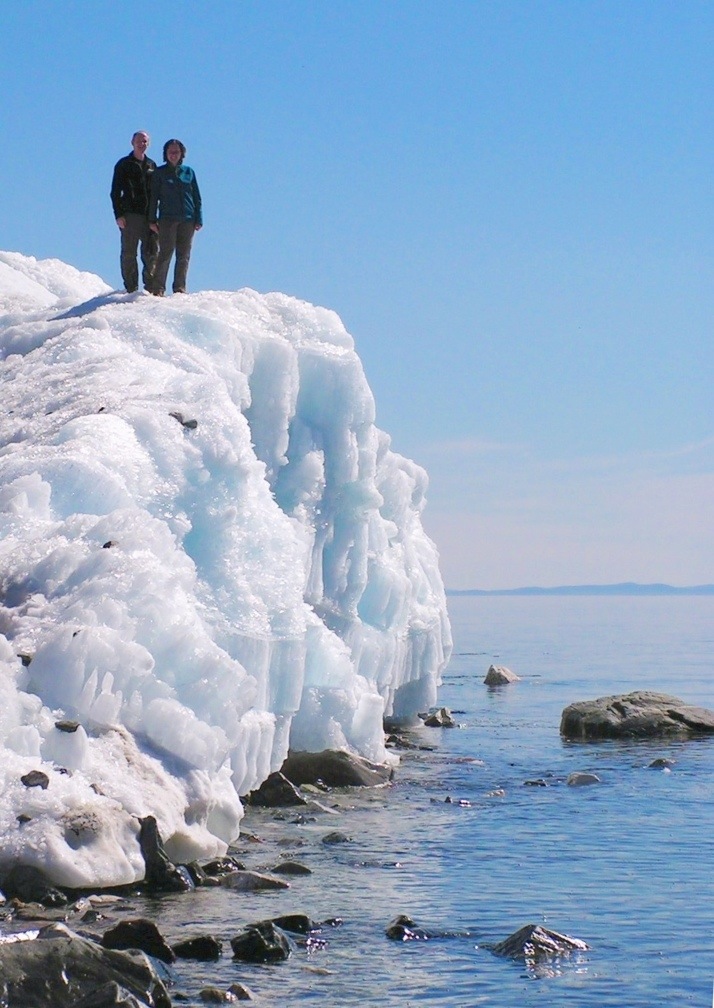 Us on the ice crystals at the top of Lake Baikal. Photo credit: Rada ;)
Us on the ice crystals at the top of Lake Baikal. Photo credit: Rada ;)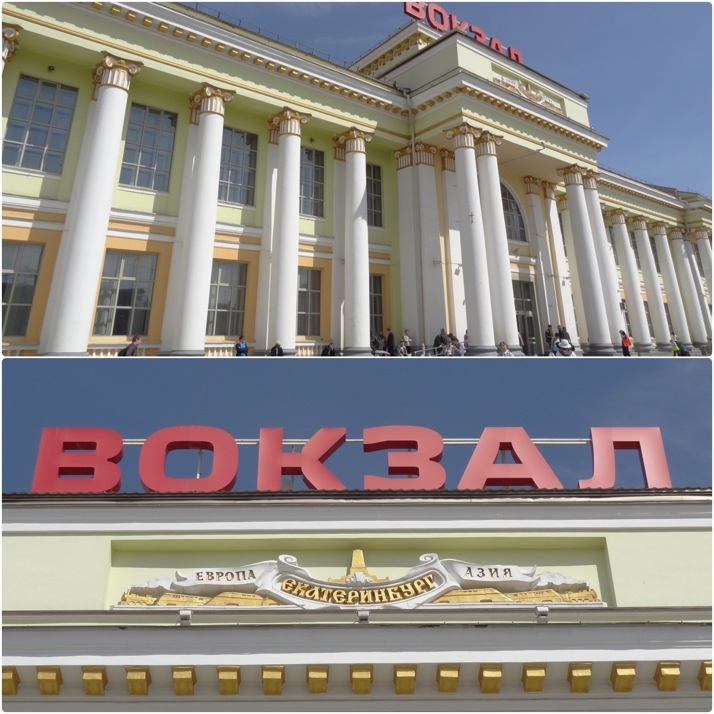 Yekaterinburg train station
Yekaterinburg train station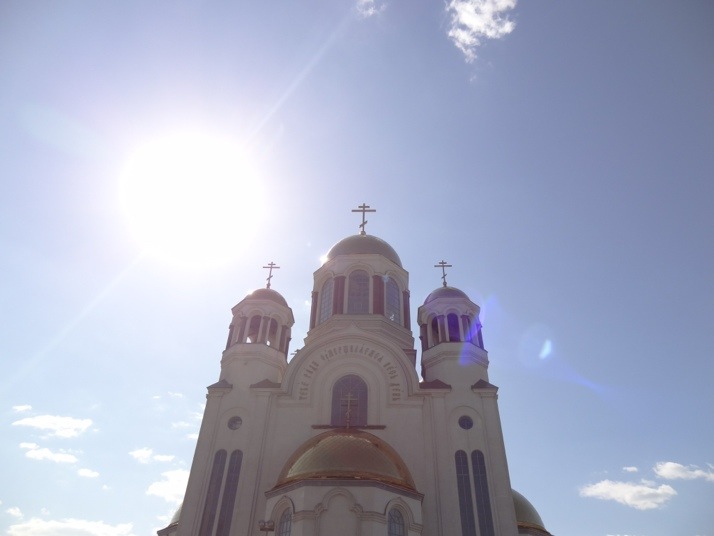 The Church of All-Saints Resplendent on Russian Land (aka Church on the Blood)
The Church of All-Saints Resplendent on Russian Land (aka Church on the Blood)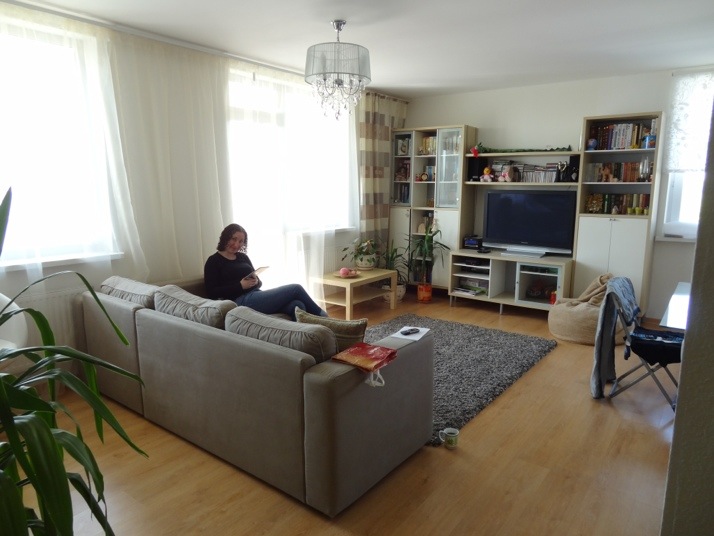 Irina’s spotless apartment in Yekaterinburg
Irina’s spotless apartment in Yekaterinburg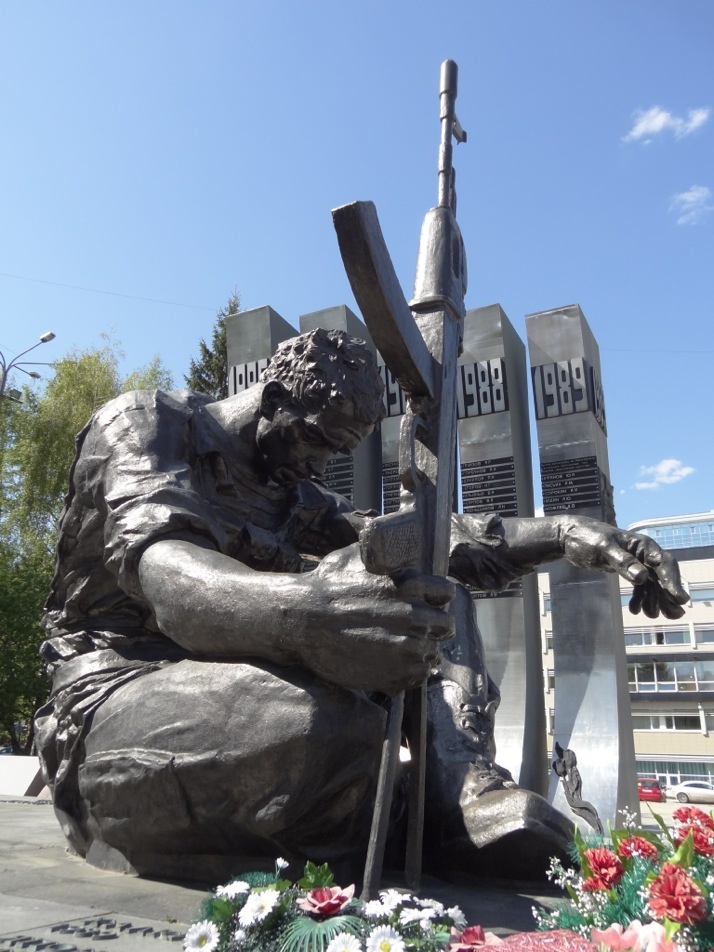 Afghan War Memorial in Yekaterinburg. Not your usual depiction of a soldier
Afghan War Memorial in Yekaterinburg. Not your usual depiction of a soldier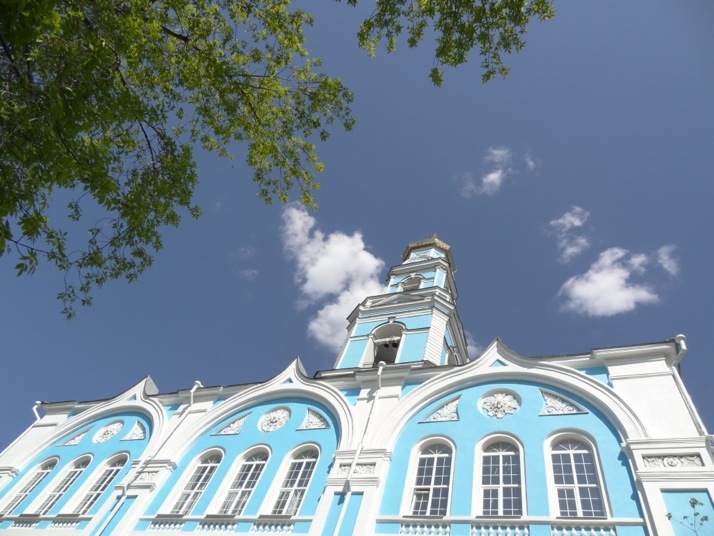 The Ascension Cathedral
The Ascension Cathedral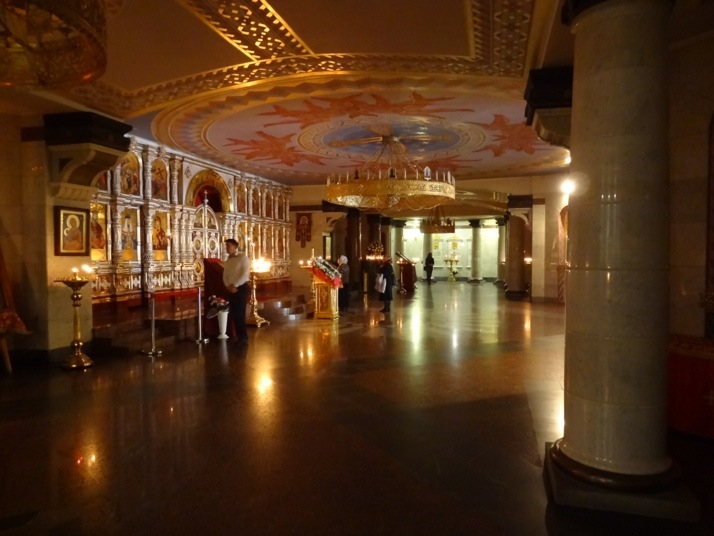 Church on the Blood – Downstairs is the memorial and history of Tsar Nicholas II and his family
Church on the Blood – Downstairs is the memorial and history of Tsar Nicholas II and his family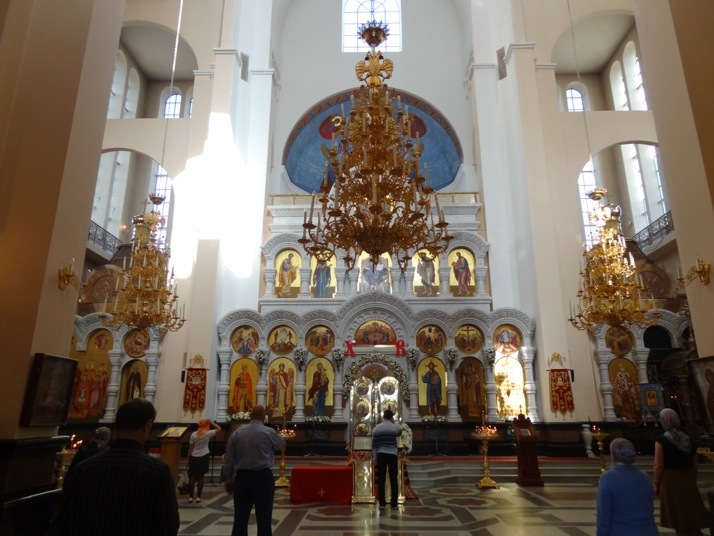 .. Upstairs is a working church, which reportedly contains the most expensive icon ever commissioned
.. Upstairs is a working church, which reportedly contains the most expensive icon ever commissioned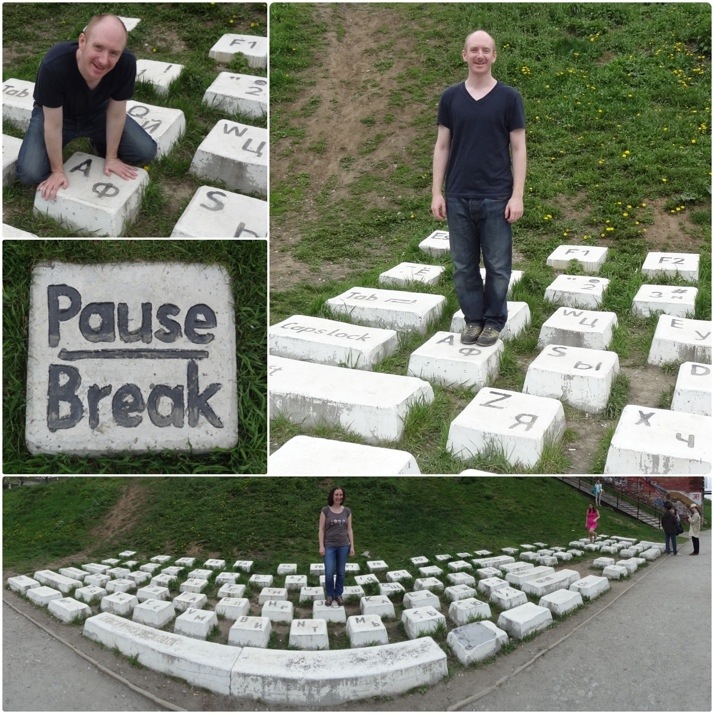 The QWERTY art installation, or the “ЙЦУКЕН” in Russian, as it’s in Cyrillic as well (It might not be “ЙЦУКЕН” – I just made that up..)
The QWERTY art installation, or the “ЙЦУКЕН” in Russian, as it’s in Cyrillic as well (It might not be “ЙЦУКЕН” – I just made that up..)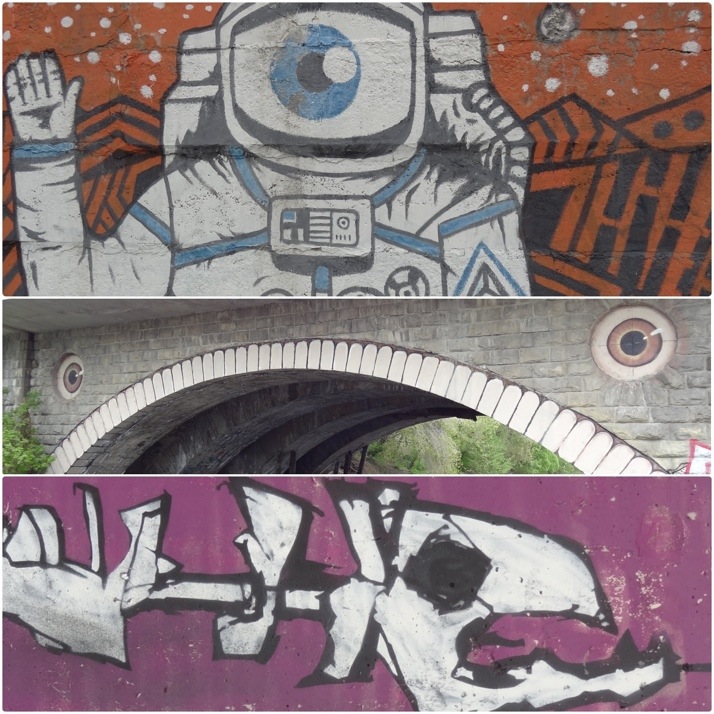 Graffiti along the Iset river
Graffiti along the Iset river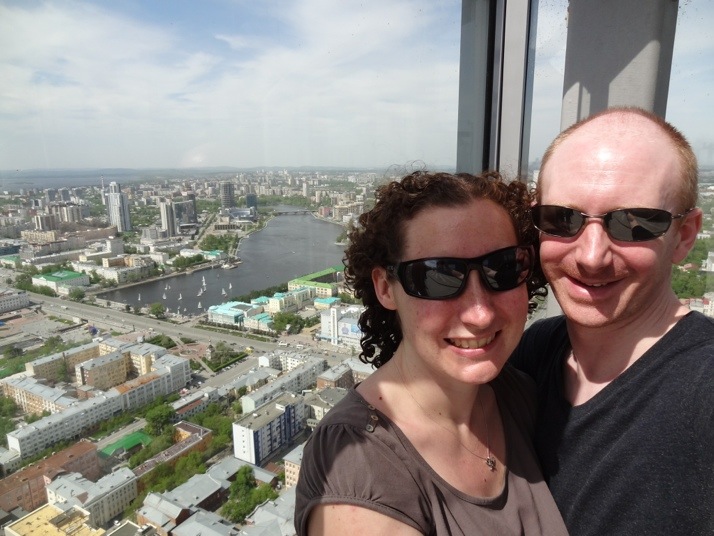 Yekaterinburg’s City Pond, from the top of the Vysotsky skyscraper
Yekaterinburg’s City Pond, from the top of the Vysotsky skyscraper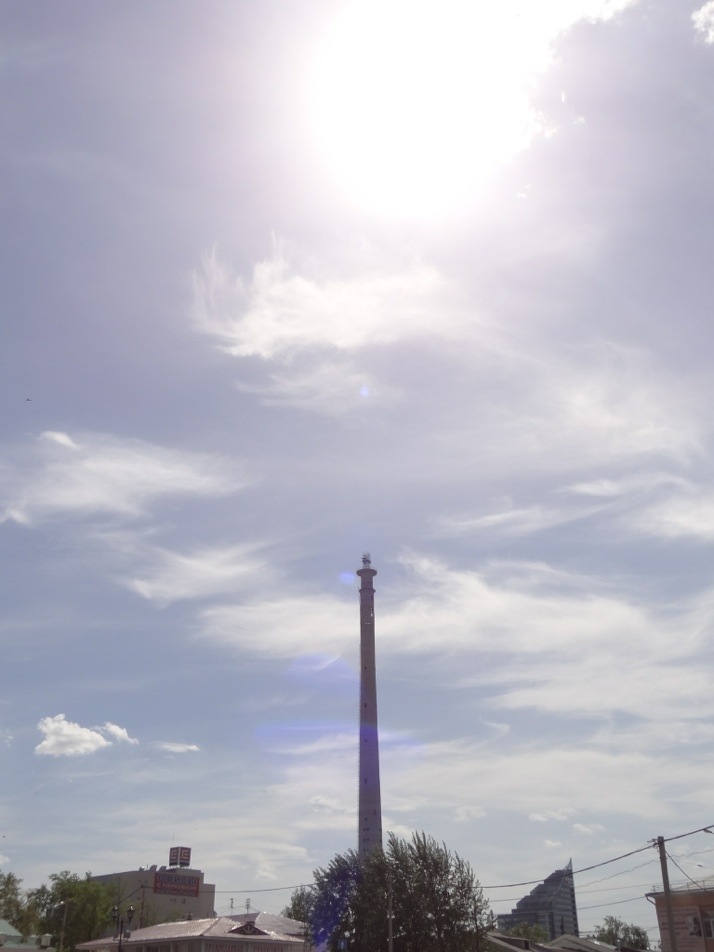 Yekaterinburg’s abandoned TV Tower
Yekaterinburg’s abandoned TV Tower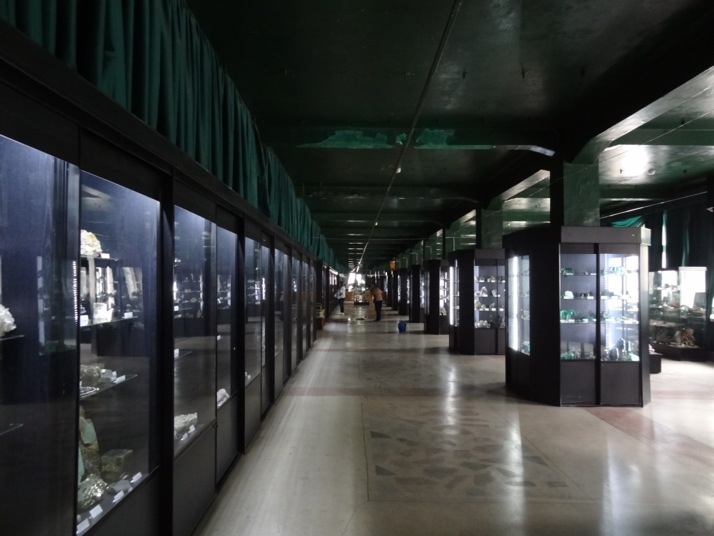 Urals Mineralogical Museum, worth the perseverance!
Urals Mineralogical Museum, worth the perseverance!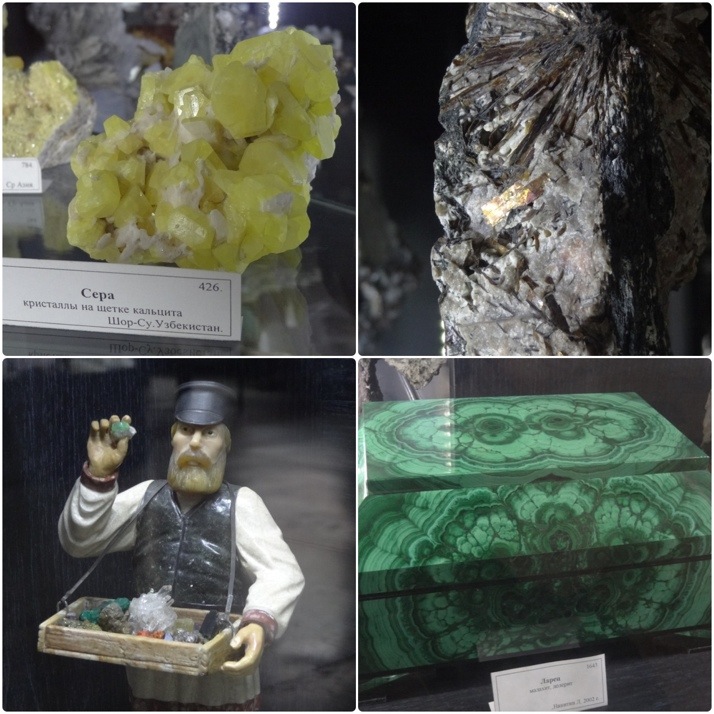 We loved the variety of minerals on display – so many different colours and shapes
We loved the variety of minerals on display – so many different colours and shapes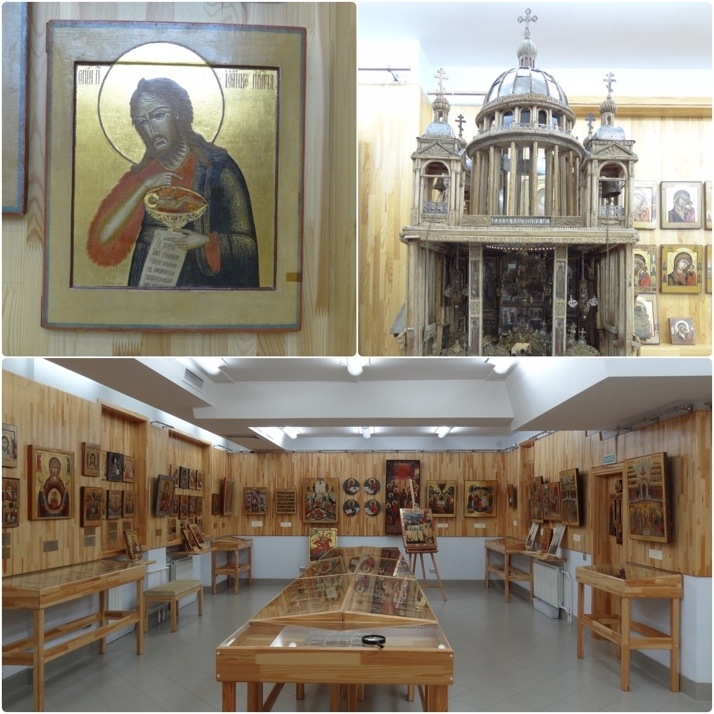 Yekaterinburg Icon History museum
Yekaterinburg Icon History museum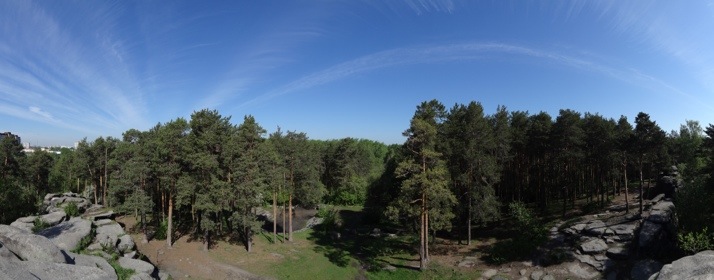 View north of the park from the easily climbable Kamennie Palatki
View north of the park from the easily climbable Kamennie Palatki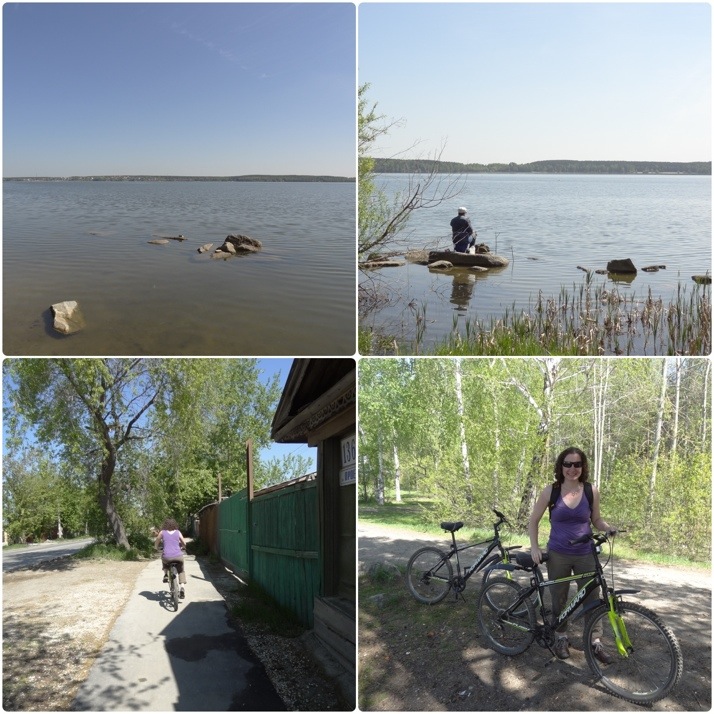 Lake Shartash, lots of fishermen, and stopped for lunch
Lake Shartash, lots of fishermen, and stopped for lunch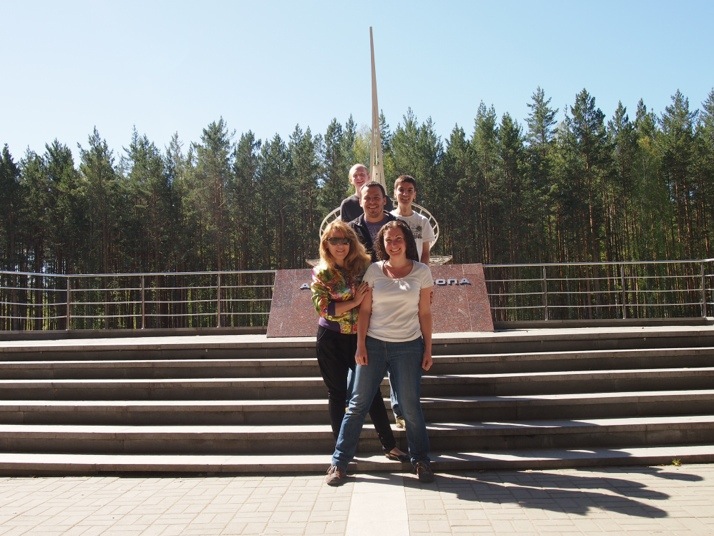 Julie, Irina, Michael, Marcus and I straddling the west-east divide
Julie, Irina, Michael, Marcus and I straddling the west-east divide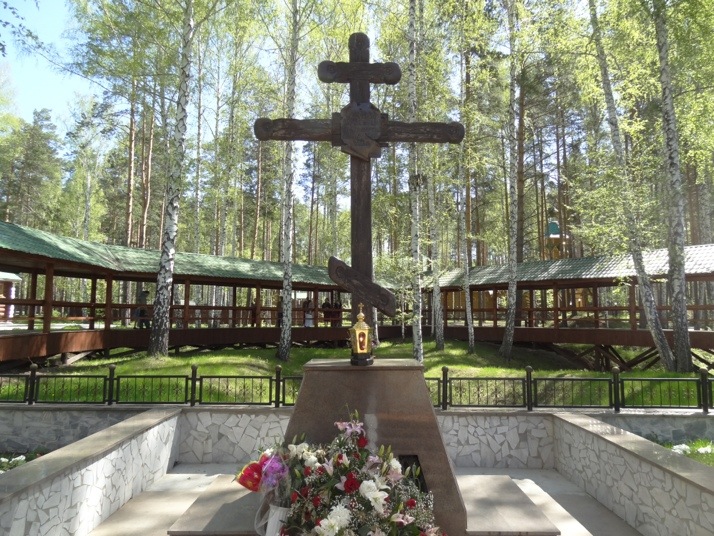 Covered walkway at Ganina Yama, site of the Romanov’s disposal
Covered walkway at Ganina Yama, site of the Romanov’s disposal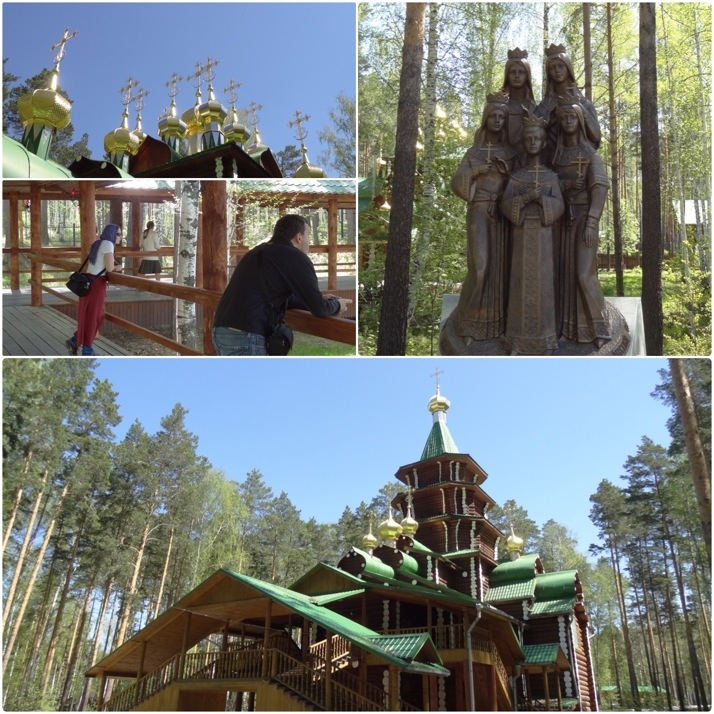 Spires, Julie and Michael in contemplation, statue of the Romanov children who were also murdered, my favourite of the churches as it has lots of outdoor staircases and balconies
Spires, Julie and Michael in contemplation, statue of the Romanov children who were also murdered, my favourite of the churches as it has lots of outdoor staircases and balconies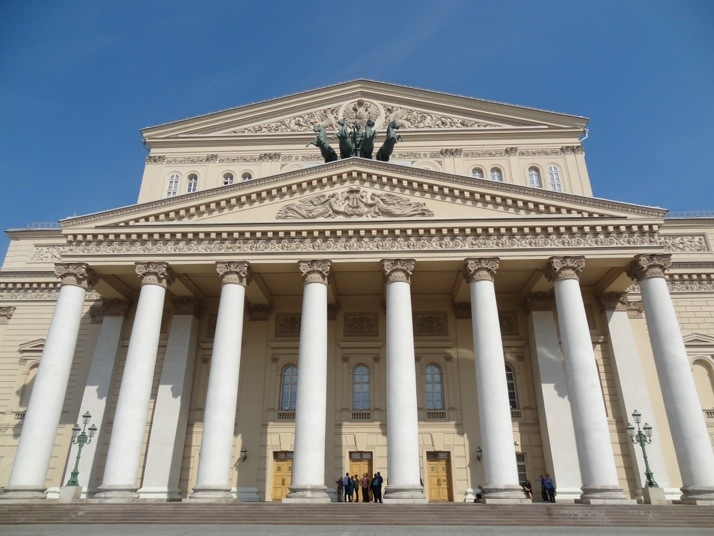
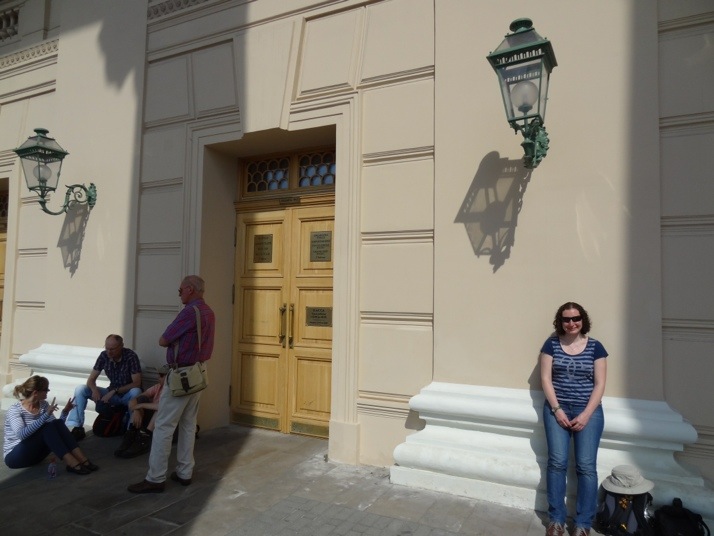 Queuing outside the Bolshoi for 2 of the 15 tour tickets. The couple to the right sitting down are the friendly Dutch translating organisers!
Queuing outside the Bolshoi for 2 of the 15 tour tickets. The couple to the right sitting down are the friendly Dutch translating organisers!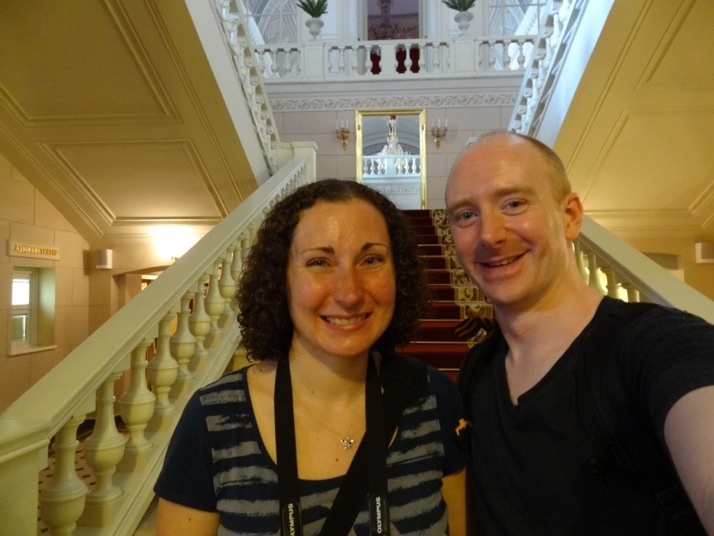 White walls, white marble staircases with gold relief and red carpets for the stairs. Elegant and sophisticated
White walls, white marble staircases with gold relief and red carpets for the stairs. Elegant and sophisticated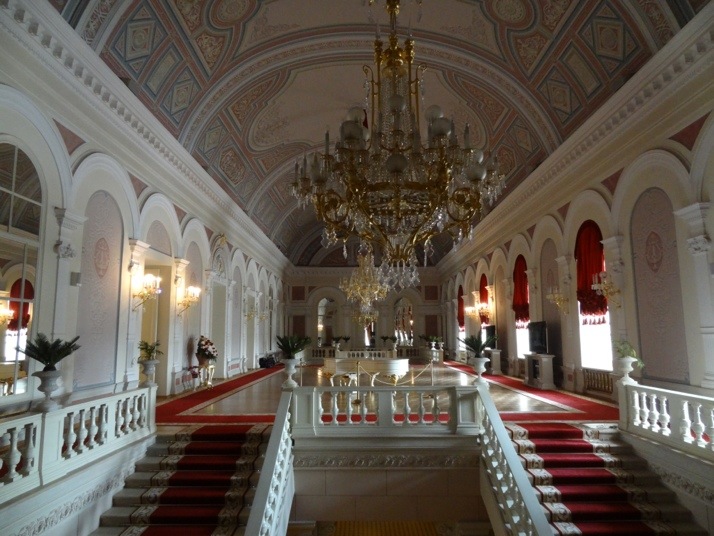 Foyer for the belle-etage
Foyer for the belle-etage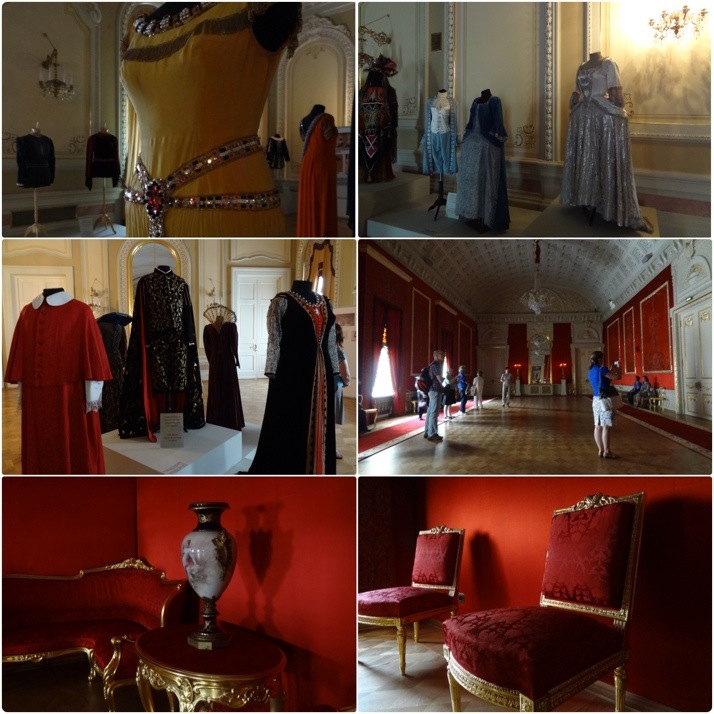 The tour included several rooms off the wings of the main theatre, which contained photographs and costumes of past performances
The tour included several rooms off the wings of the main theatre, which contained photographs and costumes of past performances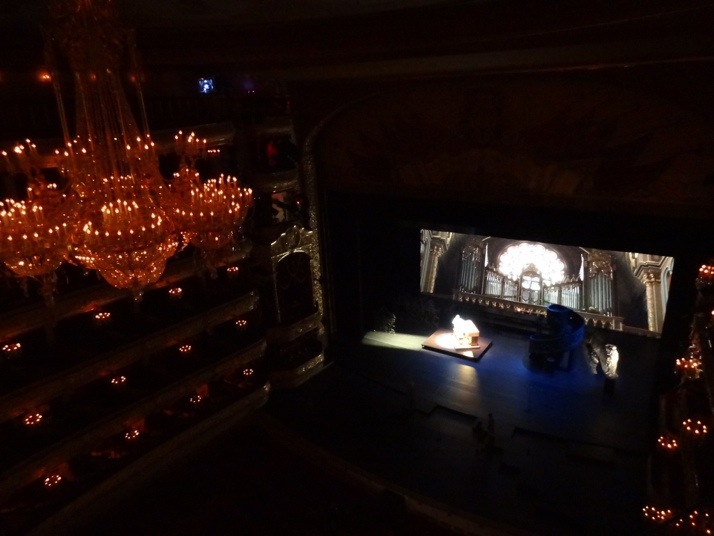 View from the 4th floor balcony, Main stage, Bolshoi Theatre
View from the 4th floor balcony, Main stage, Bolshoi Theatre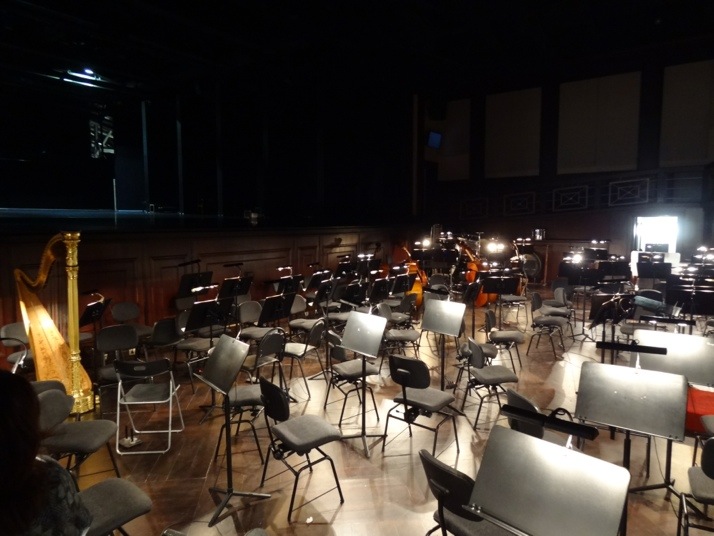 The main practice stage and orchestra pit, which is above the main Bolshoi performance stage
The main practice stage and orchestra pit, which is above the main Bolshoi performance stage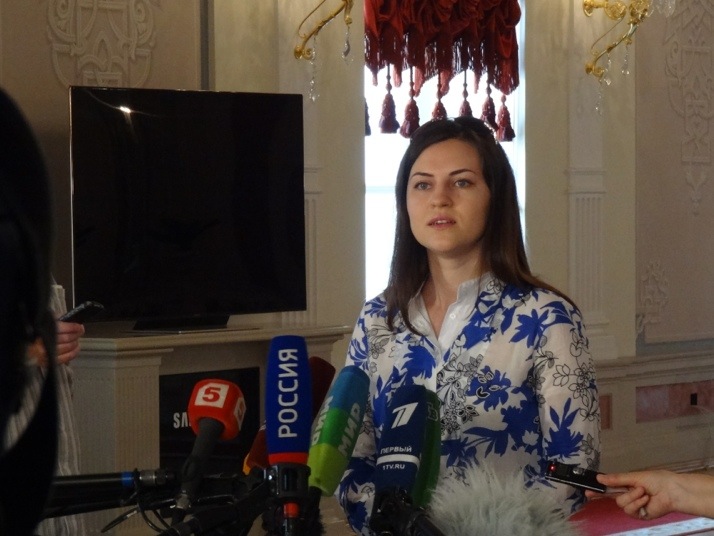 Interview inside the Bolshoi. Do you know who this is?
Interview inside the Bolshoi. Do you know who this is?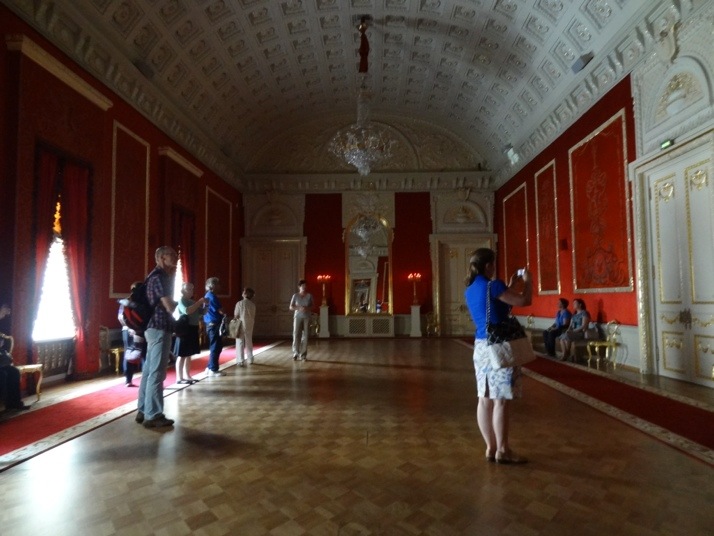 The old banqueting hall, which was used to entertain VIPs. To the west of the main stage on the first floor. That’s our tour guide in the middle of the picture
The old banqueting hall, which was used to entertain VIPs. To the west of the main stage on the first floor. That’s our tour guide in the middle of the picture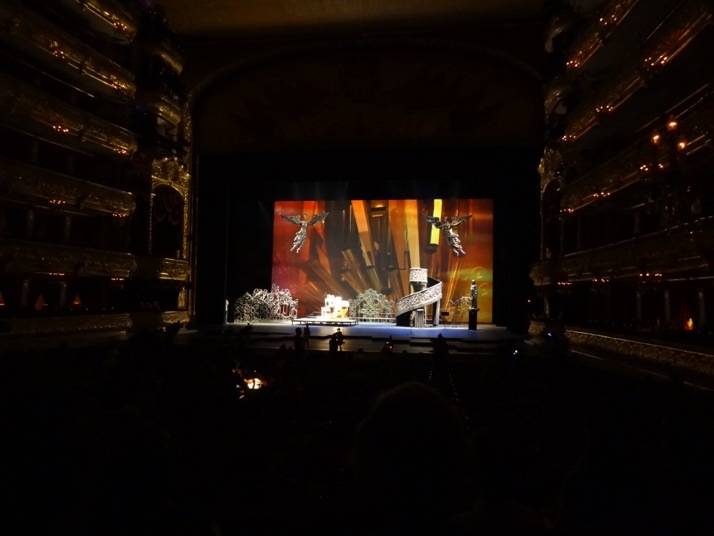 Bolshoi rehearsals. Wonderful organ music recital
Bolshoi rehearsals. Wonderful organ music recital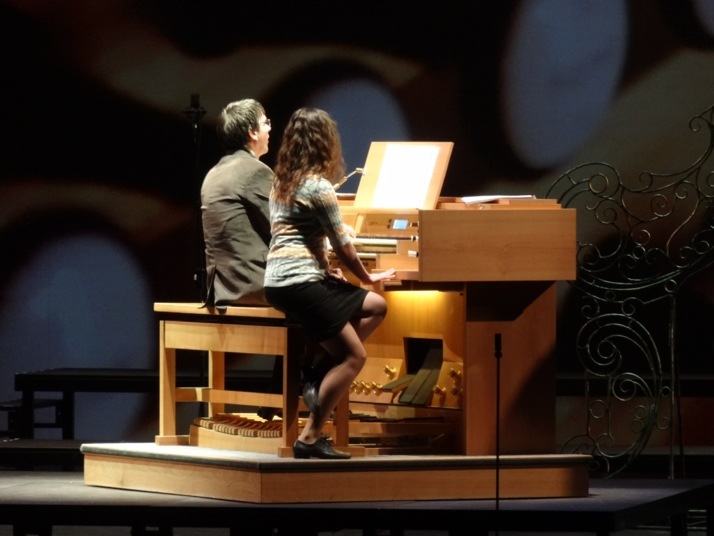 Close-up of the organ rehearsals
Close-up of the organ rehearsals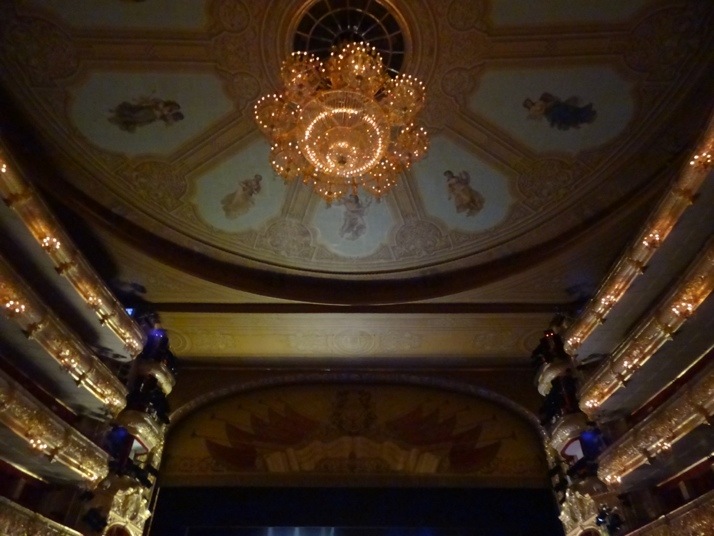 The ceiling in the Bolshoi’s main stage – stunning
The ceiling in the Bolshoi’s main stage – stunning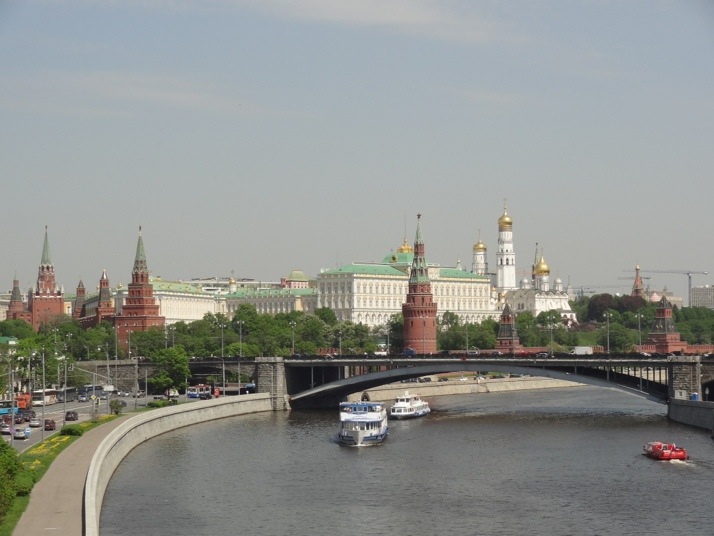
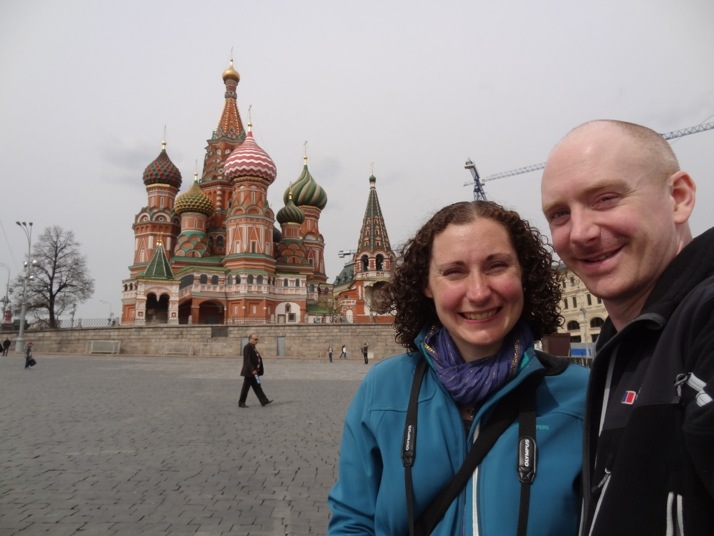 Our first evening in Moscow, outside the magnificent St Basil’s Cathedral
Our first evening in Moscow, outside the magnificent St Basil’s Cathedral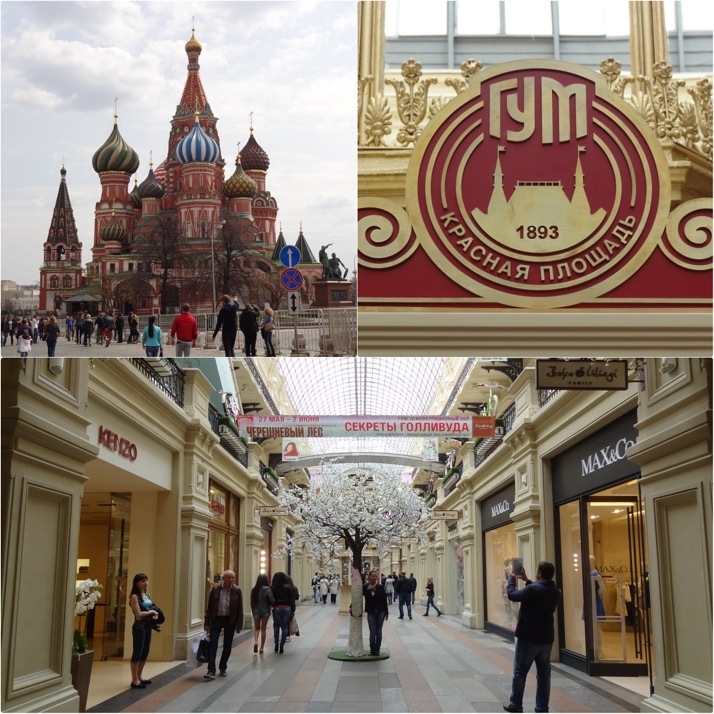 St Basil’s Cathedral from the Red Square side, and the one-time exclusive ГУМ shopping centre
St Basil’s Cathedral from the Red Square side, and the one-time exclusive ГУМ shopping centre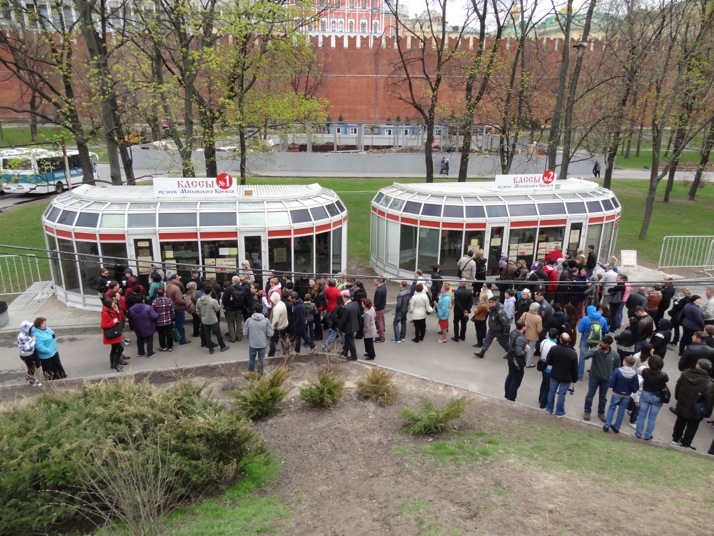
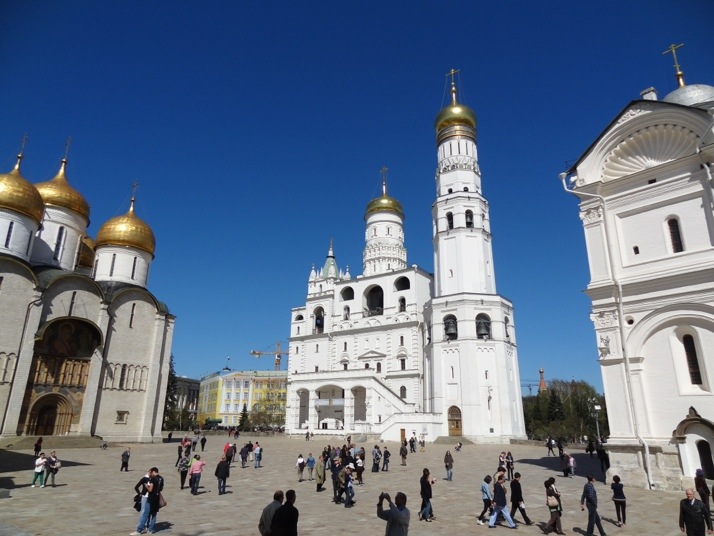
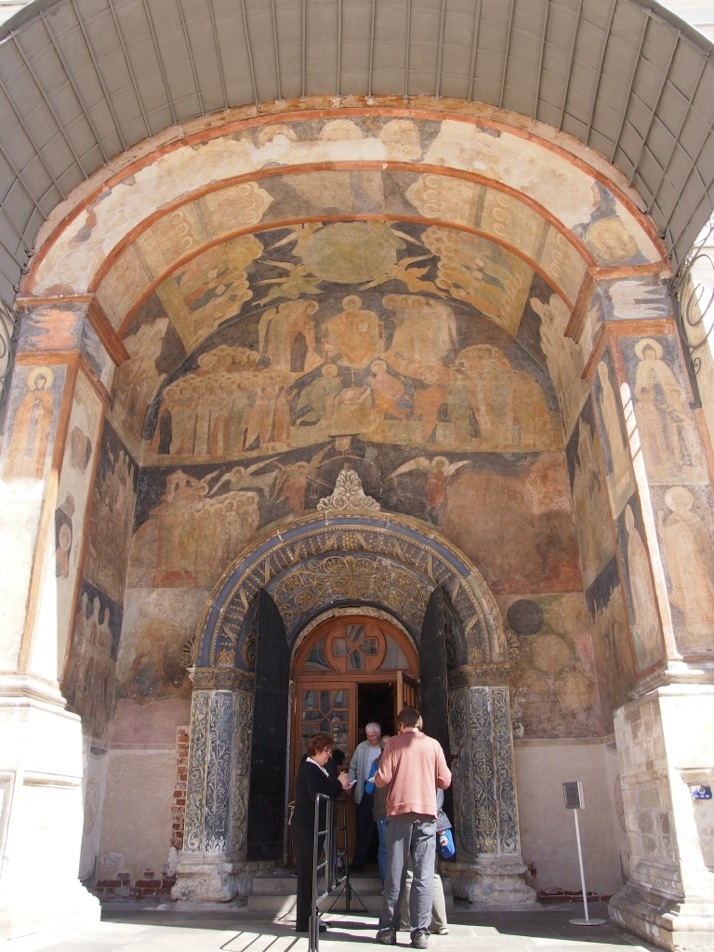 Entranceway into The Archangel’s Cathedral
Entranceway into The Archangel’s Cathedral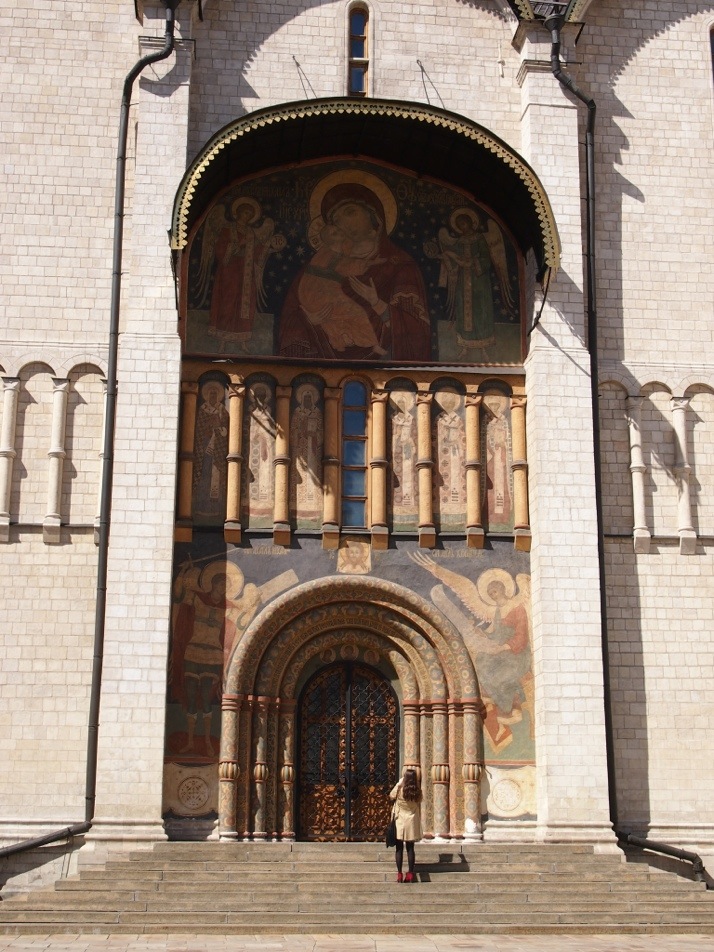 Main entranceway into The Assumption Cathedral
Main entranceway into The Assumption Cathedral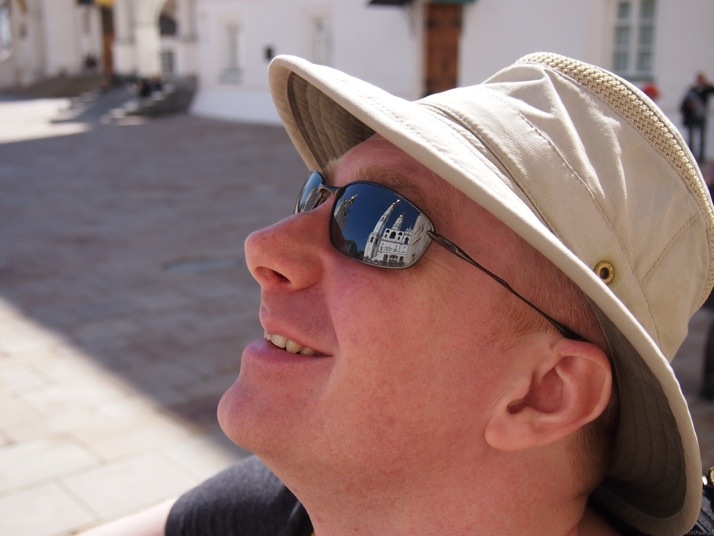
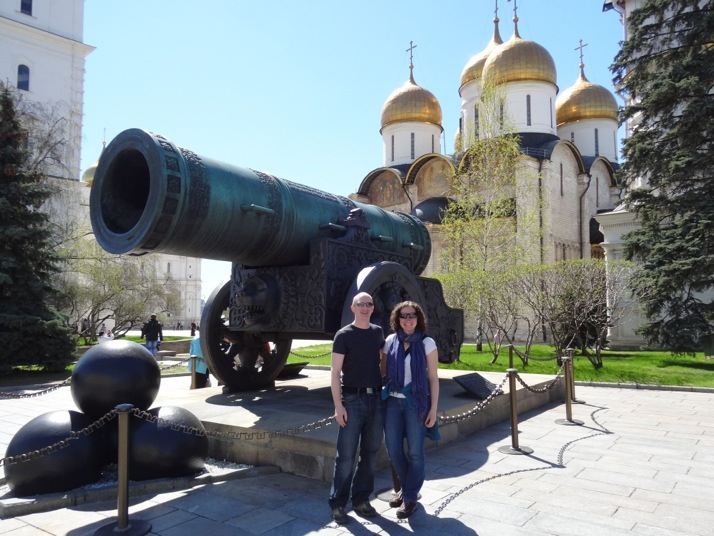
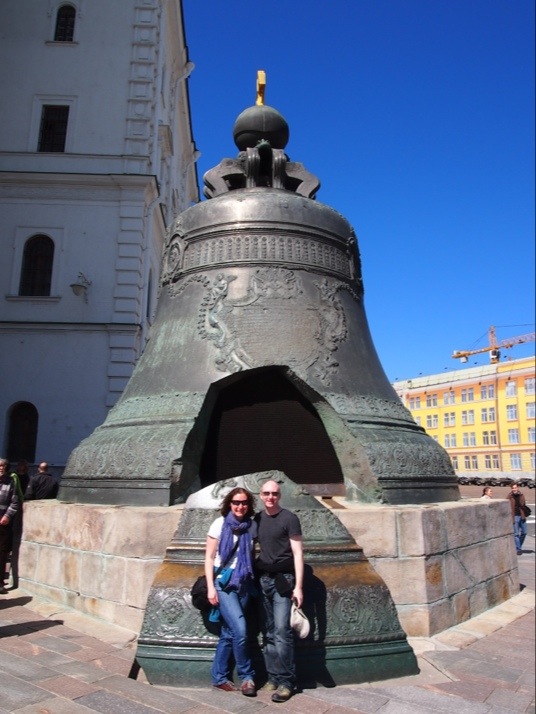
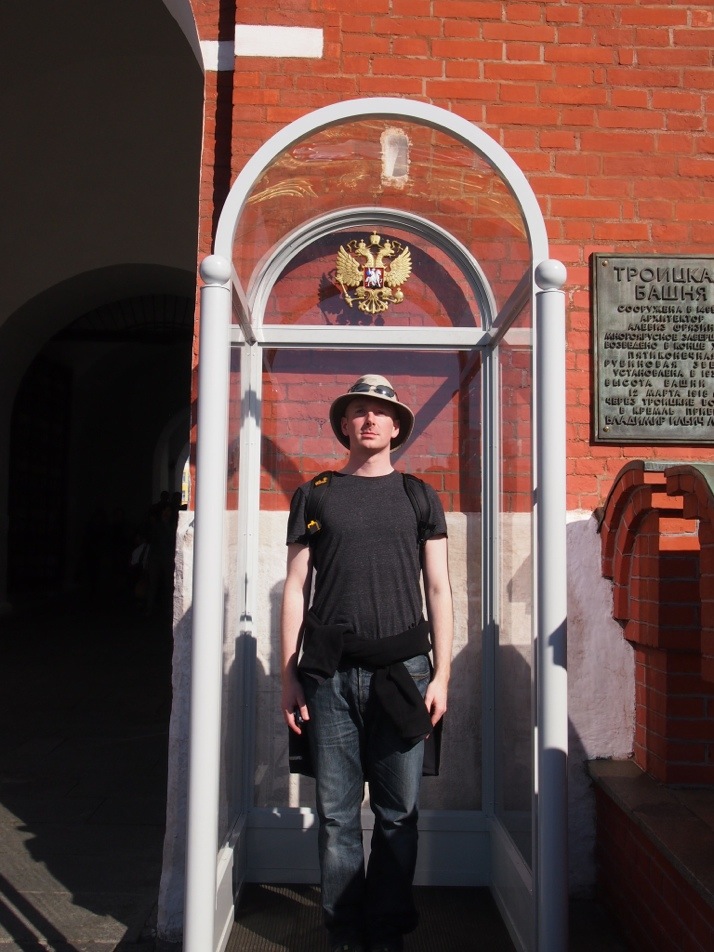
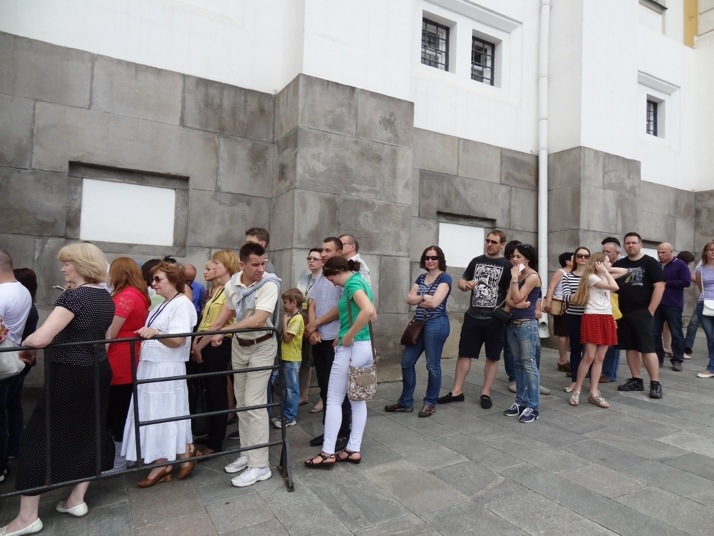 Third queue of the day – almost inside the Armoury!
Third queue of the day – almost inside the Armoury!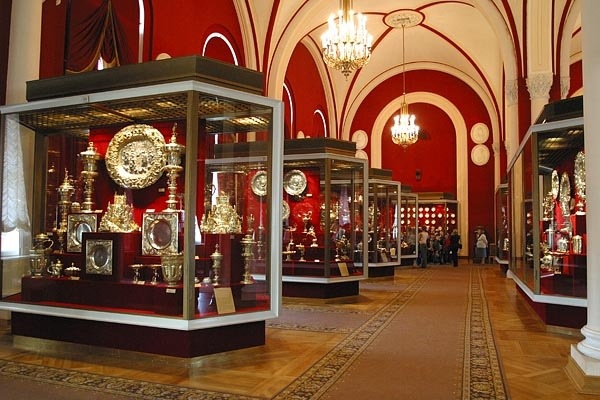 The Kremlin Armoury (photo credit: thefrenchblue.com)
The Kremlin Armoury (photo credit: thefrenchblue.com)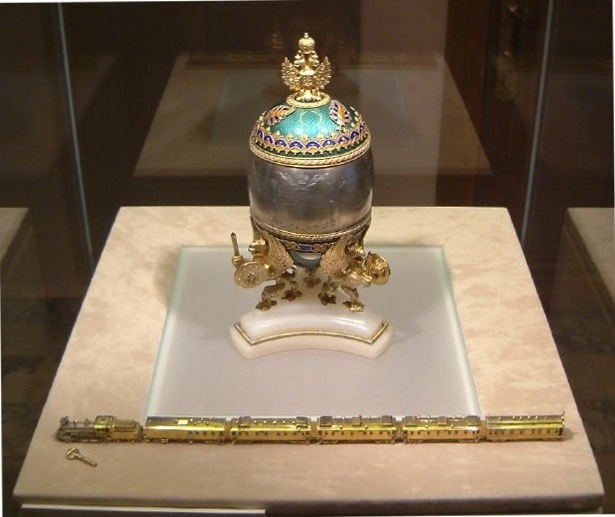 The Trans-Siberian Fabergé Egg – with working miniature train! (photo credit: wikipedia.org)
The Trans-Siberian Fabergé Egg – with working miniature train! (photo credit: wikipedia.org)